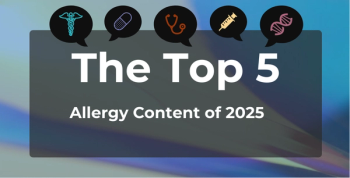
SLE Prevalence Varies Across Low- and Middle-Income Countries
Colombia and Brazil had the highest prevalence and incidence of systemic lupus erythematosus (SLE), a new investigation found.
A new analysis of low- and middle-income countries suggests that cases of
The authors said previous research has shown that SLE affects different groups of people in a variety of ways.
“Specifically, in Europe and North America, people of African descent, American Indians, and Alaska Natives have higher predilection and worse outcomes from SLE than Caucasians within the same context,” they wrote.
Some of those differences could be explained by environmental or genetic factors, they noted. However, the variance might also be influenced by issues such as patient education level, availability of medical care and insurance, and income level. Those factors are among the reasons people in low- and middle-income countries (LMICs) tend to have lower survival rates from SLE compared with people in high-income countries, they said. Still, the authors said it was difficult to draw firm conclusions about the effect of national wealth on SLE outcomes, since there had not yet been a systematic review of the prevalence and incidence of SLE in LMICs.
The investigators decided to undertake such a review, and their findings were
Their analysis yielded a wide range of results. SLE prevalence ranged from 3.2 cases to 159 cases per 100,000 people, and the incidence ranged from 0.3 to 8.7 cases per 100,000 persons. Of the countries studied, Colombia had the highest prevalence, and Brazil had the highest incidence of SLE. Ukraine had the lowest prevalence and incidence of any country included in the study.
Using World Health Organization regions, the authors found the pooled prevalences of the American region, Western Pacific regions, and African region were 300, 36, and 60 cases per 100,000 people, respectively.
They said existing evidence comparing rates of SLE in LMICs to those of wealthier countries like the United States vary in their conclusions. One potential problem, they said, is that countries have different data collection procedures and varying numbers of skilled health care providers. Yet, what is clear is that SLE is common in LMICs, they said. As in other studies, these data also suggest that SLE is more common in women than in men, although the exact ratios differ from country to country, the authors noted.
The authors said their study was subject to significant limitations, including variances in methodology between the studies and the authors’ decision to exclude studies that were not published in English. They added there is a lack of existing studies in certain regions of the world.
“[T]he lack of epidemiological studies of SLE in Africa requires attention from researchers, and clinical and policy makers to understand its burden with the hope of improving the health outcomes of people with SLE in LMICs,” the authors said.
They closed by noting that the incidence of SLE appears to be increasing with time and that a better understanding of where the disease is most prevalent and which people are most at risk could help public health officials better prepare and allocate resources to find and treat people with the disease.
Reference
Fatoye F, Gebrye T, Mbada C. Global and regional prevalence and incidence of systemic lupus erythematosus in low-and-middle income countries: a systematic review and meta-analysis. Rheumatol Int. 2022;42(12):2097-2107. doi:10.1007/s00296-022-05183-4
Newsletter
Stay ahead of policy, cost, and value—subscribe to AJMC for expert insights at the intersection of clinical care and health economics.







































